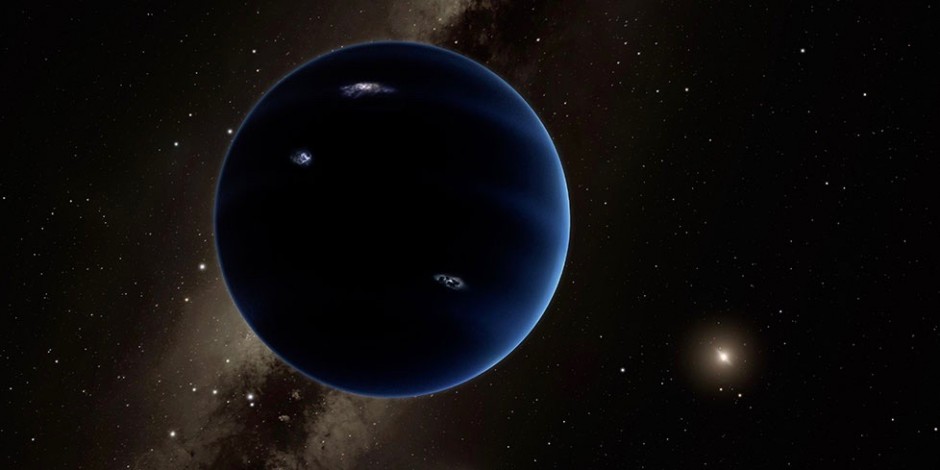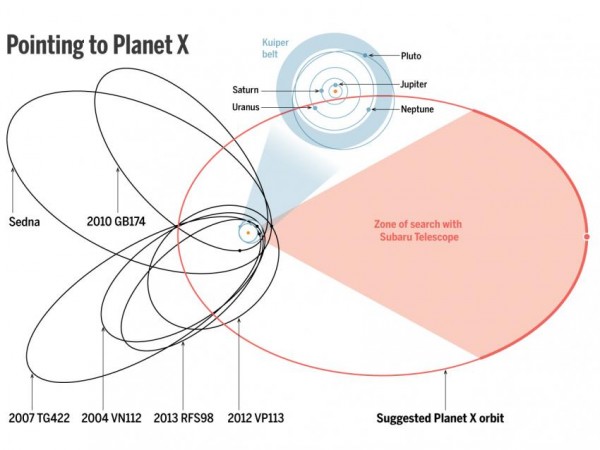Focus on Planet Nine

Members of PlanetS have joined the worldwide race to spot the alleged ninth major object in the outer Solar System. Researchers at the University of Bern study the evolution of such a planet and estimate its visible magnitude.

“And if PlanetS also gets into the search of the 9th planet” enthusiastically exclaims Stéphane Udry , co-director of PlanetS, during the General Assembly of the NCCR held in late January in Grindelwald. If the proposal seemed a little extravagant at first, it has been quickly taken seriously by the members of PlanetS present at that time. “It is clear that many teams will be on the spot,” says Stéphane Udry “but we have the advantage of having specialists in all areas of planetary science.”
No sooner said than done, a “Doodle” is launched for setting up a meeting so that everyone can bring his ideas to advance the “Planet 9” folder. A date already seems to be emerging in early March in Geneva, since forty members of PlanetS have opted for this period. “It will not be easy to find this planet if it exists,” explains Christoph Lovis, a specialist in planetary atmospheres, “because if we could define its orbit we do not know where it is on this orbit.” Indeed, if the orbits of dwarf planets in the Kuiper belt were partially stabilized by the presence of this hypothetical ninth planet, these orbits are not dependent on its current position. “It would be necessary to scan the entire sky to find an object of a 21st or 22nd magnitude, it’s like looking for a needle in a haystack,” adds Christoph Lovis. This planet would be at a distance of 600 AU (100 to 1000) from the sun, being 20 times further than Neptune and would have a mass of about ten Earths
The call by Stéphane Udry to all members of PlanetS sought to encourage consideration of some basic questions. What kind of emission can we expect? At what wavelength must it be observed for optimum detection? Where should we look? Can we predict its position using dynamic constraints? How can we organize campaigns of observation and on which instruments?
Visible magnitude of 20 to 22
Possible answers will come only through joint involvement between dynamicists, internal structure theorists, atmosphere experts, observers, and many good wills. This good will must be quick to appear, and in fact Esther Linder and Christoph Mordasini, two members of PlanetS at the University of Bern, just submitted a paper in which they tried to estimate the evolution and magnitude of Planet 9. According to this paper, Planet 9 would have a visible magnitude of 20 to 22, a mass of less than 20 times that of Earth and a radius equal to 3.6 Earth radii. In addition, the temperature of Planet 9 would be around 47K and is well above its equilibrium temperature suggesting that internal mechanisms could “heat” the planet.
Part of the orbit has already been observed long before the “discovery” to exclude a priori the presence of Planet 9 in certain part of the sky. Linder and Mordasini conclude their investigations into considering that the LSST telescope currently under construction near the Cerro Tololo in Chile could be the most appropriate instrument to flush out Planet 9 if it exists. Indeed, with its 3000 Megapixels camera the LSST will make a survey of all the southern sky in just three nights.
But the countdown has started for a good part of the “planet community” which is already looking into the case of Planet 9, the dynamicists teams run their computers at full capacity and the most powerful telescopes in the world, such as Subaru, already scrutinize the sky (see Figure). There is no doubt that whoever discovers Planet 9, if it exists, will enter the pantheon of legendary astronomers just like Galileo or Hubble. (PB)
Categories: External Newsletter, News
